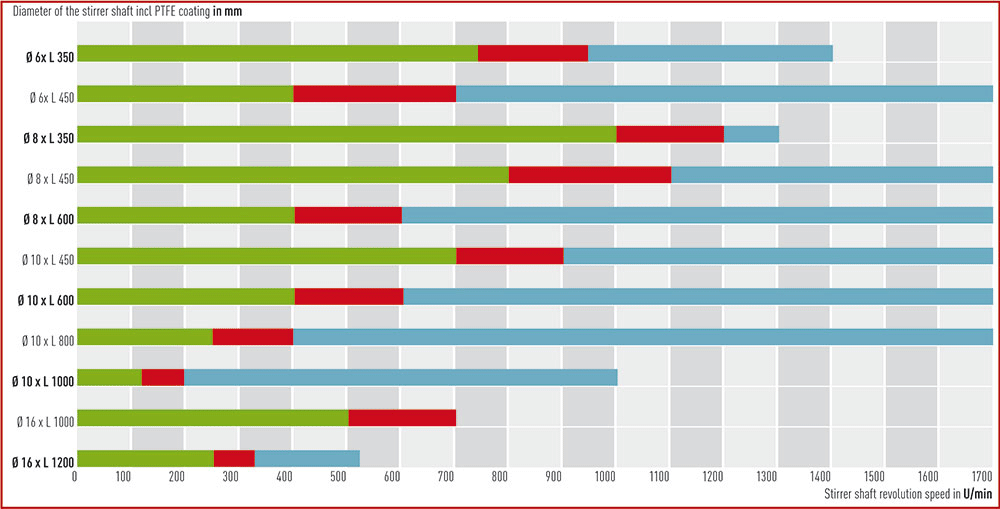Stirrer Shafts The following data are based on field experience tests done with BOLA stirrer shafts. Those tests have shown that it is not possible to state a maximum RPM but the range in which the shafts vibrate heavily. Such vibrations are called resonance. At a certain speed, a superposition of the oscillations takes place and the resonance becomes visible as vibrations. Due to those vibrations the bearings of the agitator are exposed to high stresses and in worst case accidents can be caused by tipping over agitators. The use of liquids as medium can reduce vibrations, worn out agitator bearings or insufficient stability of the agitator support increase vibrations. In practice, these “critical RPMs” should simply be avoided by either staying below or skipping quickly this “critical RPM range” to obtain a quiet running stirrer shaft. In general: the longer a stirrer shaft is, the larger its diameter should be.
The chart helps you to choose the right stirrer shaft respectively to determine the maximum RPM. As many different parameters affect the quiet running of a stirrer shaft, it is recommended that the user tests it under his own conditions. Please note, that for double impulse stirrer shafts the critical RPM range lies 200 rpm below the stated values. Green Area: Red Area: Blue Area: |

